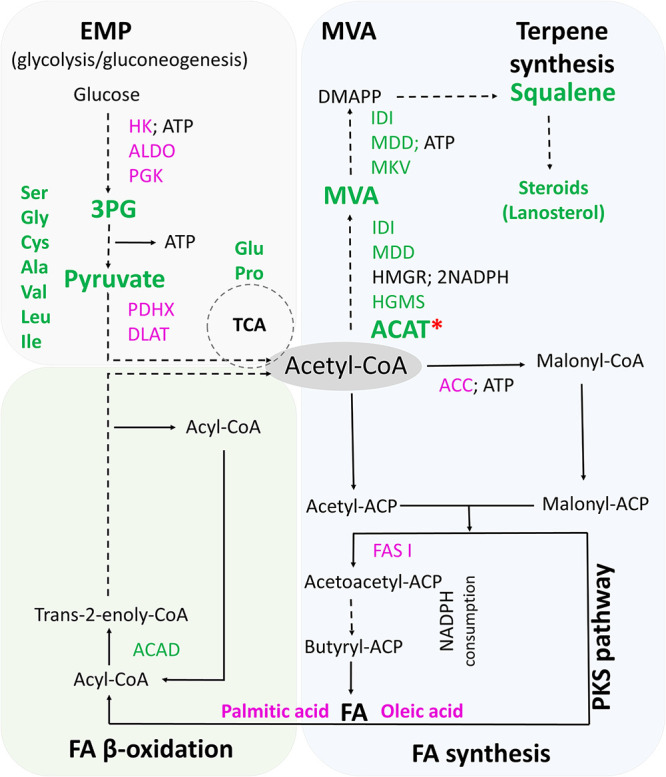Efficient Terpene Production by Marine Thraustochytrids: Shedding Light on the Thermodynamic Driving Force
- Recherche,
An article published in mBio in october 2021.

mBIO
Authors
DOI: 10.1128/mBio.01976-21
Affiliations
- 1 Université de Tours, EA2106 "Biomolécules et Biotechnologies Végétales," Tours, France.
Abstract
Terpenoids, such as squalene, are valuable compounds for cosmetic and drug industries, the supply of which is often limited by natural sources. Alternative production strategies have been investigated for decades but remain challenging due to low yields. In a recent study, Zhang and coworkers (A. Zhang, K. Mernitz, C. Wu, W. Xiong, et al., mBio 12:e0088121, 2021, https://doi.org/10.1128/mBio.00881-21) report the potential use of marine thraustochytrid metabolic thermodynamics in effective terpene engineering. Through comparative proteomics and metabolomics, as well as thermodynamic modeling, the authors demonstrated sodium-induced changes in thraustochytrid metabolism leading to a twofold increase in squalene accumulation. The differential abundances of the metabolic enzymes and metabolites, as well as higher respiration, indicated the metabolic shift from carbohydrate to lipid oxidation and increased ATP input to the mevalonate pathway and squalene synthesis. This breakthrough provides new important insights into microbial terpene metabolic engineering but above all displays thermodynamics as a valuable tool in metabolic engineering.
Keywords: Aurantiochytrium sp.; metabolic flux; squalene; terpene engineering; thermodynamics.

